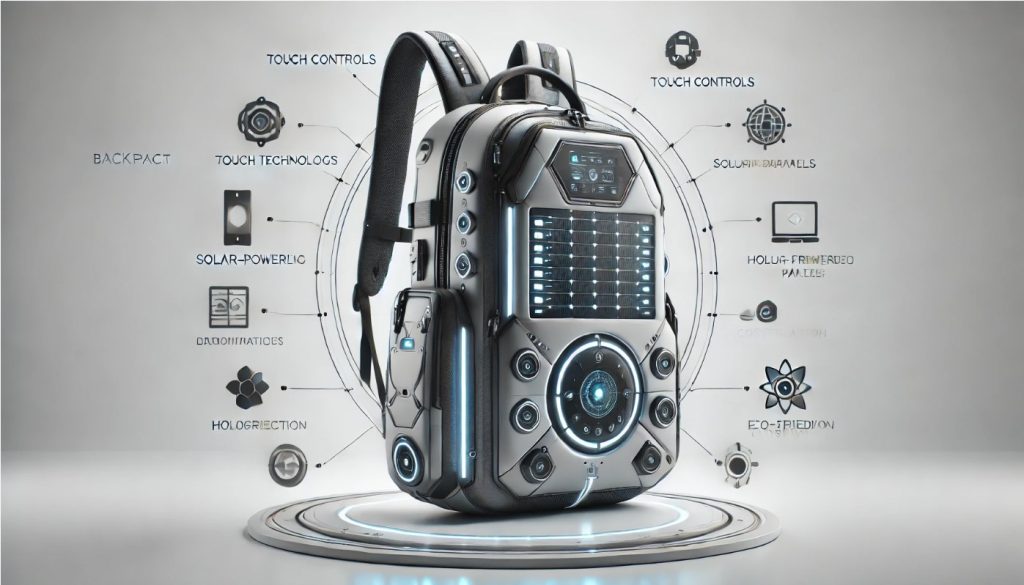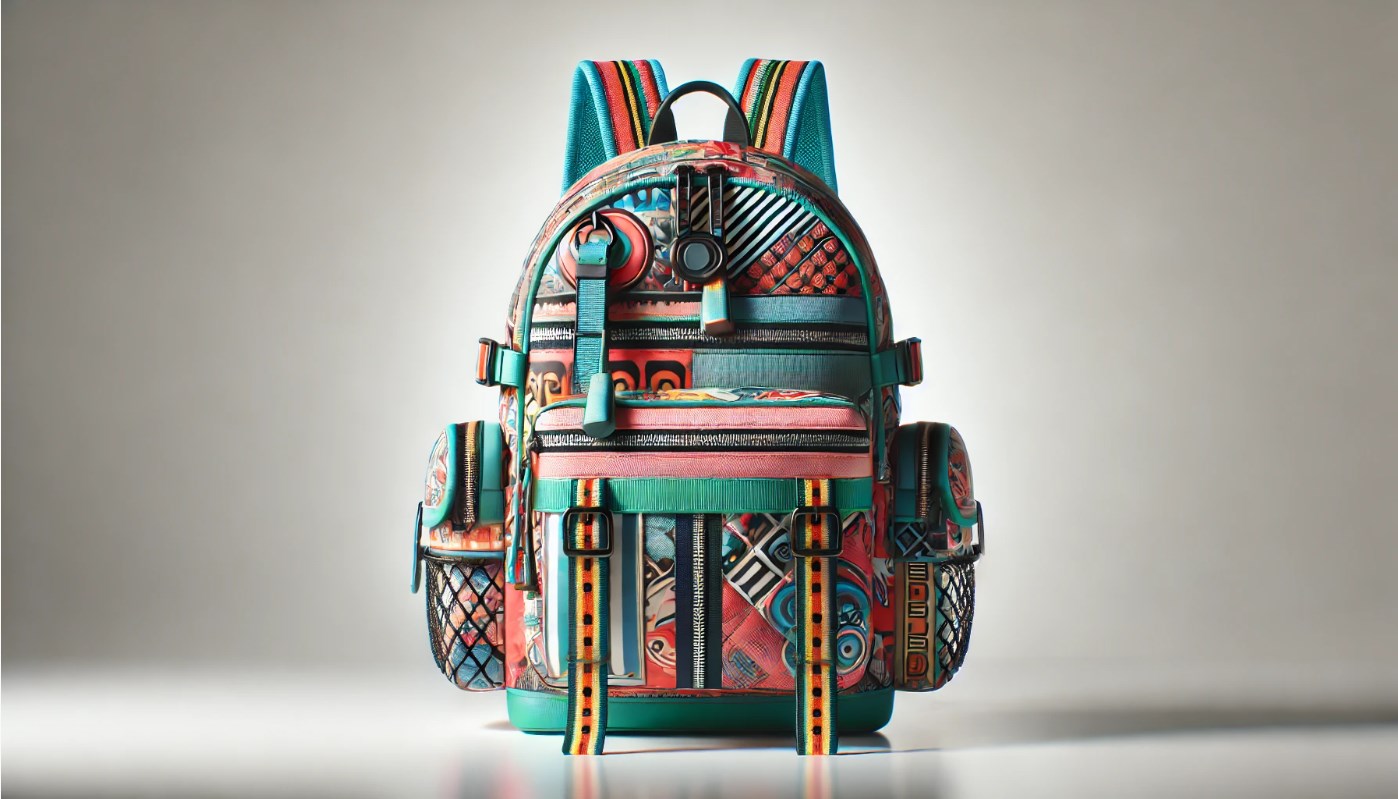Backpacks have been a staple accessory for generations, providing a simple yet effective solution for carrying personal items. Over the years, the design, functionality, and materials used in backpacks have evolved significantly. As technology advances and consumer needs change, the future of backpacks is becoming increasingly exciting, with innovations that promise to redefine how we use and perceive these everyday items.
The Role of Technology in Shaping the Future of Backpacks
Smart Backpacks: The Intersection of Fashion and Function
As technology continues to permeate every aspect of our lives, it’s no surprise that backpacks are also becoming more “intelligent.” Smart backpacks, which incorporate advanced technology into their design, are an emerging trend that will shape the future of backpack development.
Integrated Charging Systems
One of the most notable innovations in smart backpacks is the integration of USB charging ports. These backpacks are equipped with built-in charging systems that allow users to charge their devices on the go. The charging system typically consists of a portable power bank that is integrated into the backpack’s structure, with accessible USB ports located on the exterior of the bag. This feature is particularly popular among digital nomads, students, and commuters who need to keep their smartphones, tablets, or laptops powered throughout the day.
Beyond the basic charging ports, some smart backpacks are beginning to integrate wireless charging capabilities, allowing users to charge their devices simply by placing them in a designated pocket or compartment without the need for cables. This hands-free approach to charging is an exciting development that could soon become a standard feature in smart backpacks.
Built-In GPS Tracking
Security is a major concern for backpack users, especially when it comes to losing valuable items like laptops, wallets, or phones. The integration of GPS tracking systems in backpacks is a growing trend. These trackers allow users to locate their backpack through a mobile app if it gets lost or stolen. Some backpacks also have built-in alarms that can be activated remotely to alert the owner if the bag is moved without their consent.
As more people travel with expensive electronics and other valuable items, GPS-enabled backpacks offer peace of mind by making it easier to locate and recover lost bags. Additionally, GPS tracking is useful for people who may need to keep track of their bags while on the move, such as students, travelers, or those commuting to work.
Interactive Backpacks with LED Displays
Another futuristic innovation that may soon be seen in backpacks is the inclusion of interactive LED displays. These backpacks would allow users to display custom messages, notifications, or designs on their bags using an integrated LED screen. This could be particularly useful for advertising, personal expression, or even emergency purposes.
For example, a commuter might use an LED backpack to display their destination or travel updates, while a traveler might use the display to indicate that their bag is fragile or contains valuable items. The potential for interactive displays opens up a wide range of creative possibilities, combining both fashion and functionality.
Connectivity and Integration with Other Devices
As backpacks become more technologically advanced, their integration with other devices will become increasingly important. Future backpacks may feature Bluetooth or Wi-Fi connectivity that syncs with smartphones, tablets, or wearable devices, offering a seamless experience for the user. Imagine a backpack that can alert you to missed notifications, automatically adjust the temperature of an internal compartment based on its contents, or even serve as a hotspot for internet connectivity when you’re on the move.
Wearables are also likely to be incorporated into backpack designs. For example, backpacks could come equipped with biometric sensors that track a user’s health or stress levels, helping them optimize comfort by adjusting the weight distribution or padding. This level of interconnectedness will push the boundaries of what we expect from everyday carry items, making backpacks far more than just a tool for storage.
Eco-Friendly Innovations in Backpack Design
Sustainable Materials: Moving Toward a Greener Future
As concerns about the environment and sustainability grow, consumers are increasingly looking for products that align with their values. The backpack industry is no exception, and many brands are turning to sustainable materials to reduce their environmental impact.
Recycled and Recyclable Materials
One of the most prominent trends in the eco-friendly backpack market is the use of recycled materials. Recycled polyester, made from repurposed plastic bottles, is already being used in a variety of backpacks. This not only reduces the amount of plastic waste that ends up in landfills but also lessens the need for virgin materials, conserving natural resources. Brands that use recycled materials are capitalizing on the growing demand for sustainable products by appealing to eco-conscious consumers.
Additionally, more companies are exploring fully recyclable backpacks that can be returned at the end of their lifecycle and processed into new products. This closed-loop approach to manufacturing will help to significantly reduce waste and improve the overall sustainability of the industry.
Natural and Plant-Based Materials
In addition to recycled fabrics, backpacks made from natural or plant-based materials are gaining popularity. Hemp, for example, is a fast-growing, low-impact crop that can be used to produce durable and eco-friendly fabrics. Hemp fibers are naturally resistant to mold and mildew, making them an ideal material for backpacks that need to withstand outdoor conditions. Another sustainable option is cork, which is harvested without harming the tree, making it a renewable resource. Cork backpacks are lightweight, durable, and biodegradable, making them an excellent choice for environmentally conscious consumers.
Vegan leather, made from plant-based materials like pineapple fibers (Pinatex) or polyurethane (PU), is also a popular alternative to traditional animal leather. These materials are not only more sustainable but also cruelty-free, aligning with the growing trend toward ethical consumption.
Energy-Efficient Manufacturing Processes
Sustainability in backpack production is not just about the materials used, but also the methods employed to create them. Future backpacks are likely to be produced using energy-efficient manufacturing processes, which reduce carbon emissions and minimize waste. For example, brands may adopt technologies that allow for more precise cutting, reducing excess fabric and ensuring that every scrap is used or recycled.
As more consumers demand transparency and sustainability from the brands they support, companies will need to adopt practices that align with these values. This could mean utilizing renewable energy sources, reducing water consumption, or ensuring fair labor practices throughout the supply chain.
Enhanced Comfort and Ergonomics
Weight Distribution and Load Management
Backpacks have long been designed to carry heavy loads, but as consumers become more health-conscious, there is a growing demand for backpacks that improve comfort and reduce strain on the body. One area of innovation in this field is weight distribution. Traditional backpacks often place a lot of strain on the back and shoulders, especially when they are filled with heavy items like laptops or textbooks.
Future backpacks will likely incorporate advanced ergonomic designs that focus on weight distribution and load management. Adjustable and padded shoulder straps, as well as breathable, padded back panels, are likely to become standard features. Some backpacks may even have weight-adjusting mechanisms that automatically balance the load to reduce the strain on the user’s body. These smart backpacks could feature sensors that detect how heavy the load is and distribute it accordingly, promoting better posture and reducing the risk of injury.
Dynamic Comfort Adjustments
Comfort technology will also evolve in the form of dynamic, self-adjusting features. For example, backpacks could incorporate adaptive suspension systems that automatically adjust to the user’s body movements or provide additional cushioning when needed. These features would be especially beneficial for those who carry heavy or bulky loads over long distances, such as travelers, students, or outdoor enthusiasts.
Breathable materials and moisture-wicking fabrics are another area where innovation is taking place. Backpacks with built-in ventilation systems or moisture management technology will ensure that users stay comfortable, especially during intense physical activities like hiking or cycling.
Smart Straps and Anti-Theft Features
As backpacks become more high-tech, we will likely see straps that offer additional features for security and comfort. Smart straps equipped with sensors could detect when a backpack is being lifted or moved without the owner’s permission, alerting the user via a smartphone app. These backpacks could also have built-in locks that automatically engage when left unattended for a certain period, preventing theft.
Moreover, RFID-blocking technology is likely to be integrated into backpacks, especially for travelers and commuters who carry sensitive items like passports, credit cards, and ID cards. RFID-blocking pockets can protect against digital theft, ensuring that personal information remains safe from electronic pickpockets.
Modular and Multi-Purpose Backpacks
Backpack Customization: Modular Components for Specific Needs
Another major innovation in the future of backpacks is the rise of modular, customizable designs. These backpacks allow users to add or remove compartments, pouches, and accessories based on their specific needs. A modular backpack could, for example, come with a base unit and a selection of detachable compartments for a laptop, water bottle, or camera. This flexibility allows users to adapt the backpack to different situations, whether they are heading to work, the gym, or on a weekend adventure.
Modular backpacks will be particularly appealing to people with dynamic lifestyles who need a bag that can evolve to suit different activities. For example, a backpack designed for commuting can be easily transformed into a travel backpack by adding additional compartments for clothes, toiletries, and travel documents.
Multi-Purpose Functionality: From Work to Play
Future backpacks are likely to be designed with multi-purpose functionality in mind, catering to the needs of modern consumers who are constantly switching between work, leisure, and travel. These backpacks will likely feature dedicated compartments for laptops, tablets, chargers, and even gym gear, all within the same bag. The flexibility to transition seamlessly between different environments without needing to change backpacks is a major convenience that many consumers will appreciate.
For example, some backpacks may come with built-in sections that convert into a daypack for hiking or a travel bag for short trips. These versatile bags will allow users to pack everything they need for a busy day in one bag, which will be especially useful for those who need to optimize their time and space.
The Impact of Global Travel Trends on Backpack Innovation
Backpacks for Digital Nomads and Remote Workers
As remote work and digital nomadism continue to grow in popularity, there is an increasing demand for backpacks that cater specifically to the needs of remote workers and travelers. These backpacks are designed to hold everything from laptops and chargers to notebooks, clothing, and travel essentials. They offer a balance of portability, durability, and organization, allowing users to travel light without compromising on functionality.
The future of digital nomad backpacks will likely involve even more specialized compartments for high-tech gear, including power banks, portable monitors, and wireless devices. Enhanced security features, such as RFID-blocking pockets, will become standard to protect digital devices and personal information.
Travel-Friendly Features
The future of backpacks will also be influenced by travel trends, particularly as people seek to make air travel more convenient. Innovative backpacks will feature designs optimized for the modern traveler, including easy-access compartments for laptops and tablets, ergonomic straps for long-haul travel, and water-resistant fabrics to withstand unpredictable weather.
Smart packing solutions, such as compression straps and expandable compartments, will help travelers maximize space and keep their gear organized. For frequent fliers, backpacks with integrated luggage straps or smart tracking systems will ensure a seamless travel experience.







